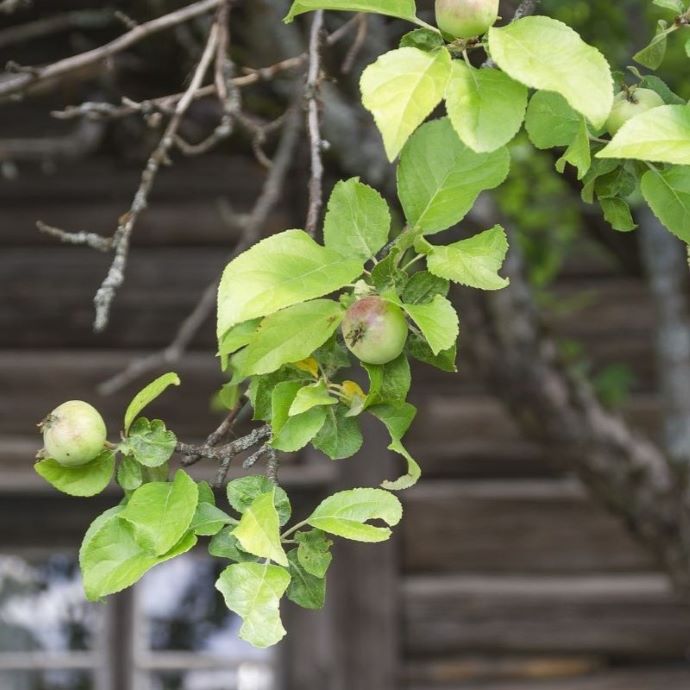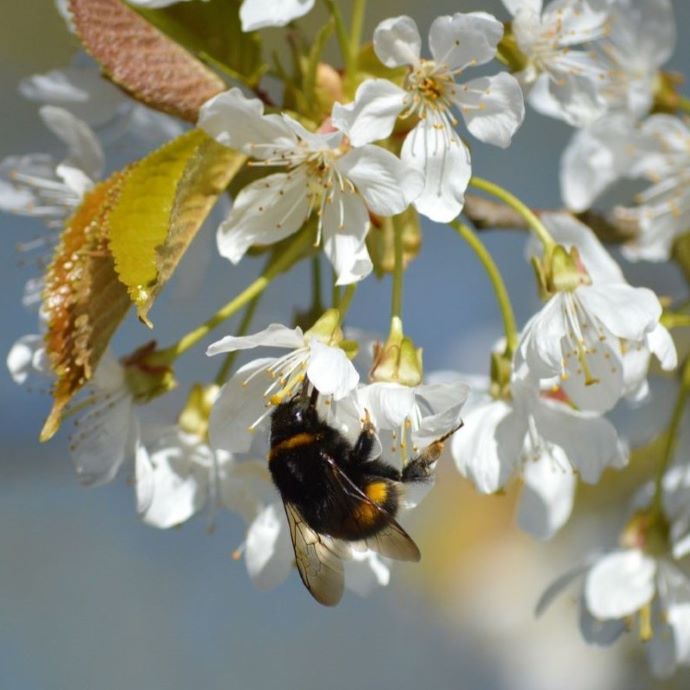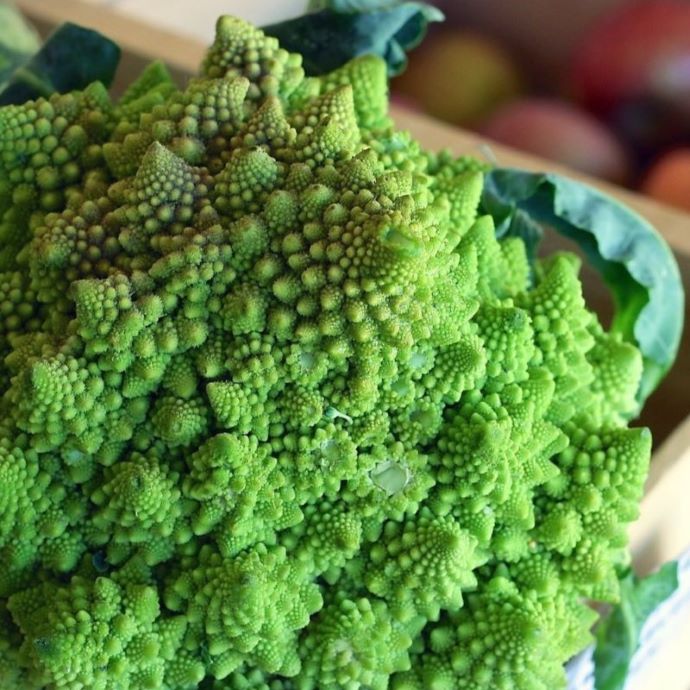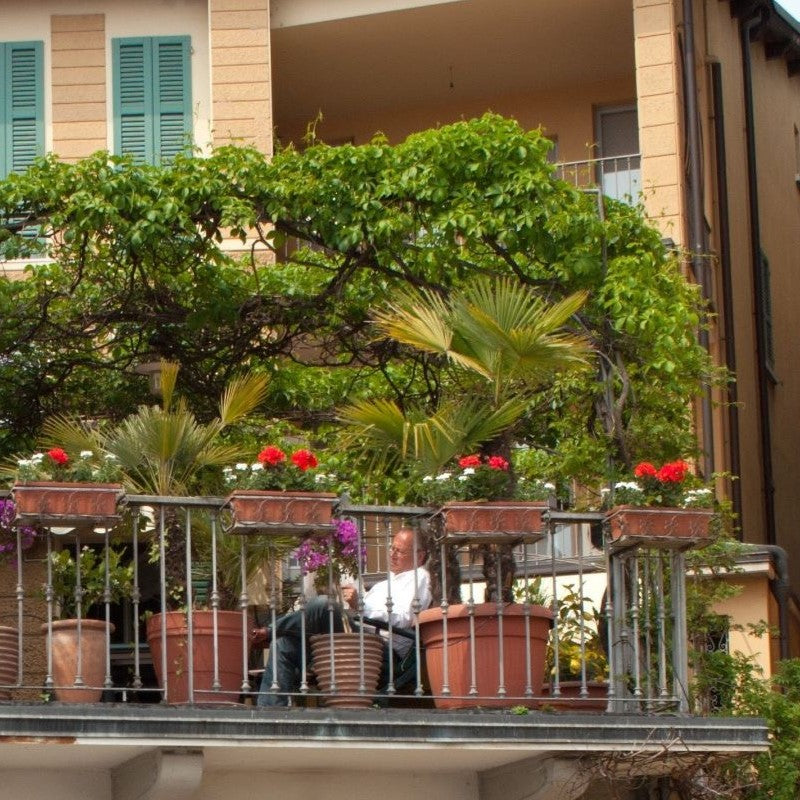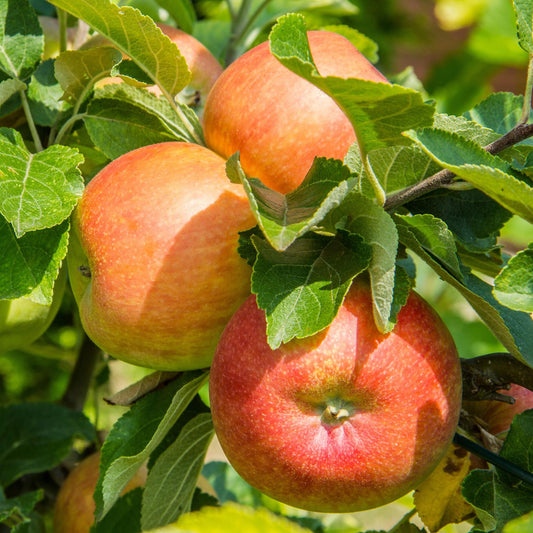Espalier Apple Trees: A Grower's Guide
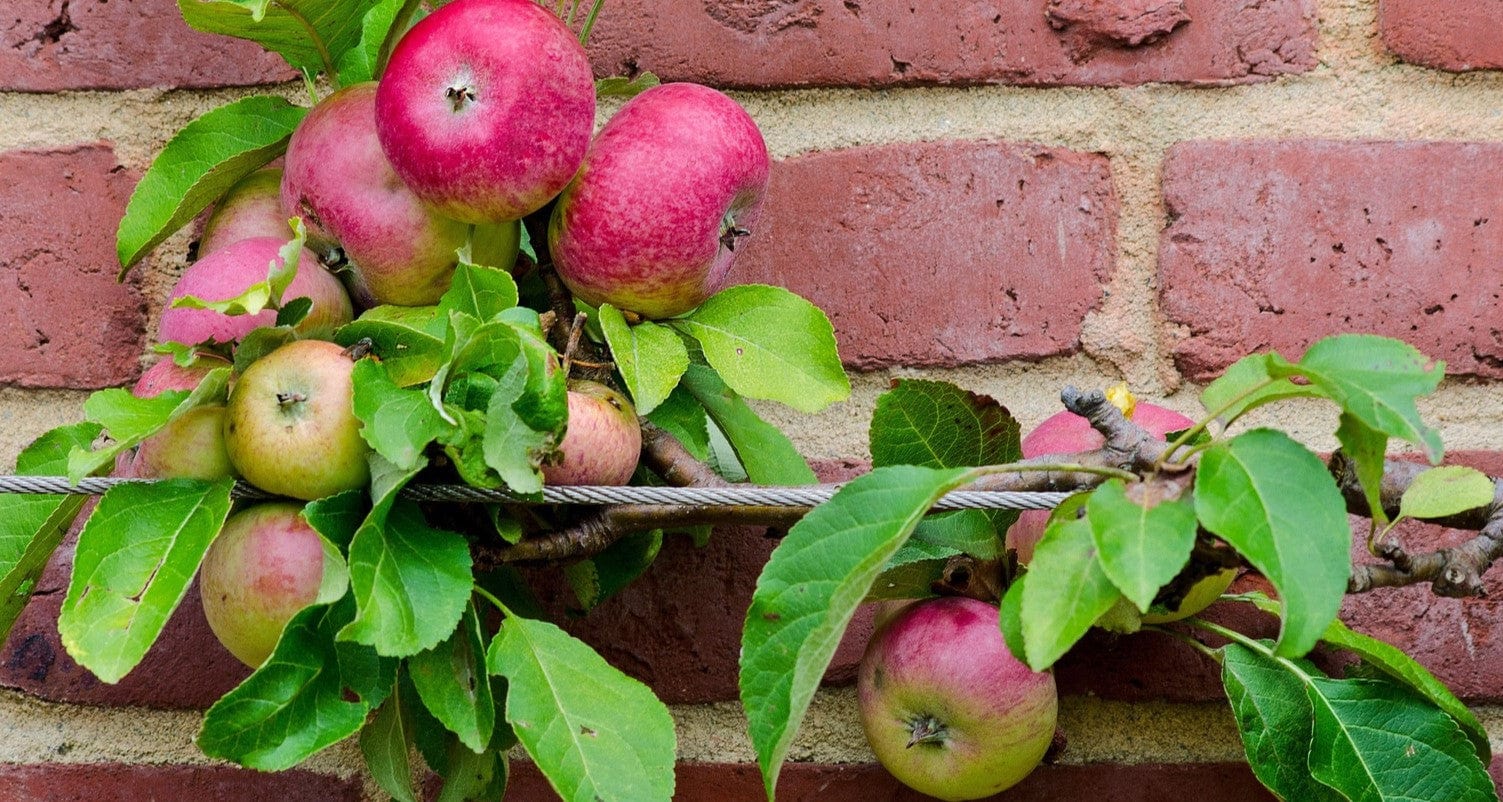
Espalier apple trees aren’t only beautiful, they can save space, make it easier to harvest your apples and even produce better fruit, too. Apple trees work particularly well and are the most commonly-espaliered fruit trees (though pear trees are often trained in this distinctive shape, too).
In this post, we’ll be walking you through how to train your apple tree into an espalier form, including everything from initial training through to long-term renovation pruning, and everything in between. First, though… What the heck is an espalier, anyway?
Jump to:
- What is an espalier?
- Why train an espalier?
- Where should you position an espalier?
- Which apple trees work as espaliers?
- How to plant an espalier
- How to train an espalier
- How to prune an espalier
What is an espalier?
Espaliers are fruit trees trained against a support, most typically in the cordon style with a single central leader and tiered pairs of horizontal branches trained perpendicular to the main trunk. The result is an attractive and productive way to make use of a sunny, south-facing wall. Other espalier types include candelabra, palmetto verrier and Belgian fence.

Why should I train an espalier?
There are many reasons you should train an espalier, including being able to pick your fruit from a comfortable height, reducing the risk of fungal disease thanks to improved air circulation between branches, and offering an effective use of space in more compact gardens. Plus, they look fantastic!
Grown against a wall, an espalier tree will also absorb heat from the surface and this will improve the fruit’s quality, as the more sunlight received, the better the development of natural sugars and colour. The size of the fruit is often better, too, because the tree puts more of its energy into the fruit, rather than growing lots of extra branches and leaves.

Where should I position an espalier?
The easiest place to grow an espalier apple tree is against a wall or fence. We recommend that this is at least 180cm tall and wide. Choose a sheltered spot where your tree will get at least 6 hours of sunlight daily in spring and summer. If you’re planning to plant more than one tree, space them 3.75-6m apart, checking the requirements for that particular variety of tree.
If you’re training an espalier on wires, you’ll need to make a fence (or at least use two freestanding wooden posts) with a couple of levels of strong wires (at the very minimum) to tie in the branches as they grow. The wires are usually spaced 35-45cm apart, with the first tier being set 50-75cm from the soil.

Credit: Flickr, Peter Albion
Which apple trees are suitable?
Espalier training is suitable for apples that are spur-bearing and varieties grafted on dwarf or semi-dwarfing rootstocks (like MM106, M26, MM111). These rootstocks are vigorous enough for the tree to grow long branches and reach the correct height, while keeping relatively compact so you don’t have too much pruning to do.
Some spur-bearing apple varieties include Bountiful, Braeburn, Cox’s Orange Pippin, Dabinett, Falstaff, Fiesta, Gala, Golden Delicious, James Grieve, Jonagold, Katy, Laxton’s Superb, Red Devil, Red Windsor, Rubinette and Spartan.
We don’t typically recommend training apple trees grafted on the most vigorous rootstocks – the branches of dwarf (and semi-dwarf) varieties tend to be thinner and more flexible, making the training process much easier. If you’re only planting one tree, then you’ll need to make sure it’s a self-fertile variety.
When planting more than one, however, you can mix the varieties and they will pollinate each other (provided they’re in the appropriate pollination groups). Since espalier training results in tastier fruit, we suggest using a dessert apple variety to get the full benefit of the improved flavour.
What does spur-bearing mean?
Apple trees can either be spur-bearers, tip-bearers or partial tip-bearers, according to the location on the branch that they produce fruit. Spur-bearing trees produce fruit on older wood nearer the trunk, on shorter-branched shoots. This makes them ideal for training as you can safely prune the ends while keeping the tree nice and compact.
How to espalier apple trees
Initial planting and training
When to plant
It’s best to start with a bare root tree as they’ve generally had minimal pruning at the time of purchase, but a potted tree is also fine. If you’re using a bare root tree, then this can be planted at any time from November to March while the tree is dormant, while potted trees can be planted at any time. The easiest time to start training an apple tree is in early spring, before it’s put on too much foliage or formed any blossoms.
Building a framework/trellis (wall or fence)
On your fence or wall, you’ll need to build a framework of wires at the levels you want your espalier’s tiered branches to grow. This is usually 35-45cm apart, with the first tier roughly half to three-quarters of a metre from the soil level.
If you’re not sure how many tiers you will want, add three or four just in case. It’s better (and easier) to have too many tiers from the off, rather than trying to add tiers later, once the tree is already established and growing.
If you’re growing your espalier against a fence, you can fix the wires between posts using eye bolts. If you’re using a wall, we’d suggest vine eyes and a tightener to make sure the structure is strong enough.
Step-by-step planting instructions
Step 1: Dig a hole 15cm away from the fence, large enough to cover all the roots.
Step 2: Add some gravel or broken crockery to the hole to help with drainage, and a sprinkling of rootgrow if you have it.
Step 3: Position the tree centrally in the hole and backfill with a mixture of compost and the extracted soil.
Step 4: Firm it in and water well. For more information on planting trees (both bare root and potted) check out our comprehensive guide.
Training
How you train your espalier apple tree will depend on what you’re starting with. If you’re beginning completely from the start with a maiden (a one-year old tree that hasn’t been formally trained) then you’ll need to undergo some additional steps as compared with planting a part-trained espalier.
Training a maiden
Once you’ve planted your tree, tie a bamboo cane alongside vertically into your wire supports, then tie the tree itself into the support. Next, hard prune your tree down to just a couple of inches above the first wire tier, making sure to cut just above a bud. As the new growth appears from this topmost bud, tie it into the bamboo support.
Pick the strongest growth stemming from the lateral buds and tie it into your wires at a 35° to 40° angle. Then, towards the end of summer, lower them to the horizontal. For all other lateral shoots, trim them each back to a few leaves. Always use sterilised secateurs to make your pruning cuts, as this reduces the risk of disease transmission.
Training a part-trained espalier
The easier option is to purchase a partially-trained espalier, like ours, where the initial training work has been done for you. This information also applies regarding implementing additional tiers on your espalier. In late winter, cut back the central leader to just above the next wire on your framework (just like you did previously if you started from scratch). Again, make sure you’re cutting just above a healthy bud.
Cut off all lateral shoots besides the pair of branches you’ve got growing along your first tier. You don’t need to do much with these, unless you don’t think they’re growing particularly well. If that’s the case, trim them back by 25% (or so) and restore them to a 35° to 40° angle just to get the growth going again. Make sure you bring them back down to the horizontal come the end of summer. (Repeat this process annually until you’ve reached the desired number of tiers).
In spring, do as you would in the initial stages creating the espalier’s first tier. That’s to say, tie in the new central leader growth to your bamboo support, train the strongest lateral shoots at the same angle as before, and cut all remaining side shoots from the main stem to just a few leaves. In late August, lower the branches perpendicular to the central trunk. Cut any shoots stemming from the tiered branches back to roughly four leaves beyond the basal cluster.
Top tip: For a little more support and guidance, you can attach additional bamboo canes for the horizontal and angled growth, along which the tiered branches can grow.
Pruning
Espaliers require summer pruning and, for more established, older espaliers, an occasional renovation pruning as well.
Summer pruning an espalier
Got all the tiers you want? Lovely, then come the middle of August, it’s time to lop off the central shoot to prevent any further vertical growth. Next, trim all side shoots growing from the tiered branches back to a few leaves after the basal cluster, while previously-pruned lateral shoots should have their current year’s growth nipped back just a single leaf after the basal cluster. If you’ve noticed any vertical shoots that are particularly vigorous and getting too big for their boots, get rid of ‘em.
Top tip: Wait until terminal buds have formed on your tree’s growth before you start summer pruning, otherwise you might need to do some additional pruning later in the year.
Renovation pruning an espalier
If your espalier has been around for between five to ten years, then you might have noticed the fruiting spurs starting to get a bit busy. Sometimes it’s a case of quality over quantity, so thinning out these congested spurs can be beneficial. If you want to keep this task small, then you can instead remove a few spurs each winter; your goal is so that no spurs are crowded.

Final thoughts on espaliers
There you have it! Hopefully, having read this, you’ll feel confident starting your very own espalier apple tree. Trust us, it’s worth it. After all, what could be better than a wall boasting bumper crops of delicious apples, glorious springtime blossoms and the look of a walled garden from a stately home? If you’d rather grow a stepover, fan or traditional cordon fruit tree, then make sure to check out our guides on the topics.
Last updated: 26/03/2025




